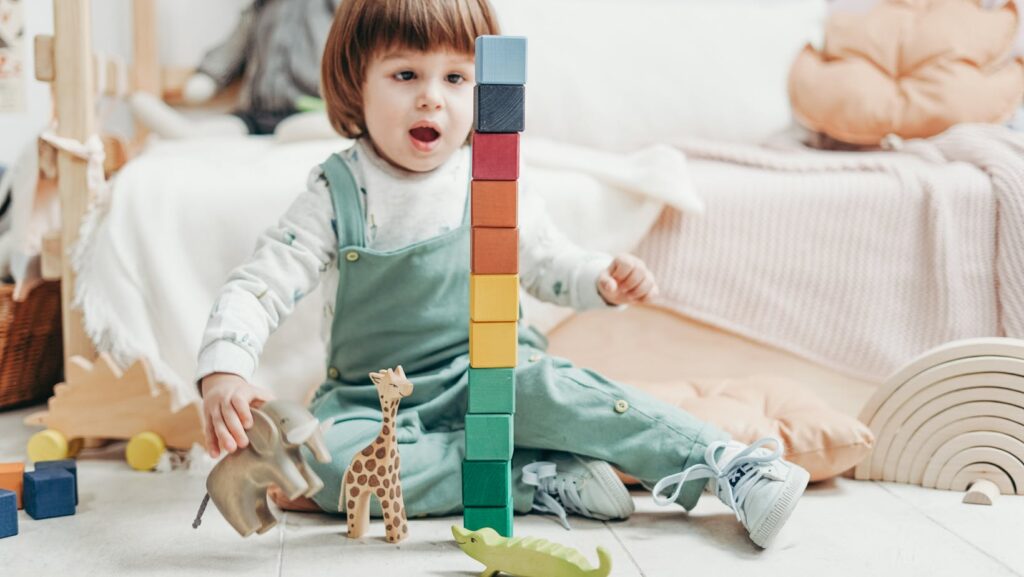As a seasoned expert in child development, I’ve delved deep into the concept of scaffolding and its profound impact on nurturing young minds. Scaffolding, a term coined by psychologist Lev Vygotsky, is a fundamental pillar in guiding children towards mastering new skills and knowledge. In this article, I’ll unravel the intricate layers of scaffolding child development and explore its significance in shaping resilient and competent individuals.
Scaffolding Child Development
Through my years of experience and research in child psychology, I’ve witnessed firsthand the transformative power of scaffolding in fostering independence and confidence in children. By providing just the right amount of support and guidance, parents and educators can scaffold a child’s learning journey, enabling them to reach their full potential. Join me as we delve into the art of scaffolding child development and uncover practical strategies to empower the next generation.
Understanding Scaffolding in Child Development
When scaffolding in child development, I always emphasize the crucial role of providing just the right amount of support to help children learn and grow. It involves building on what they already know and can do, guiding them step by step towards mastering new skills or concepts. This approach promotes independence and encourages children to take risks in their learning journey.
Vygotsky’s theory of scaffolding emphasizes the interaction between a knowledgeable guide (parent, teacher, or peer) and a child, working together to achieve a common goal. It’s all about meeting the child at their current level and providing the necessary assistance to help them reach the next stage of development.
Effective scaffolding involves offering hints or clues when children are stuck, modeling tasks to show them how it’s done, and providing feedback and encouragement along the way. By tailoring the support to each child’s needs, we can help them build their skills and confidence gradually.
In practice, scaffolding can take many forms, from asking open-ended questions to encourage critical thinking to breaking tasks into smaller, manageable steps. By being attuned to a child’s cues and responses, we can adjust our support to maximize their learning and nurture their potential.

Techniques for Effective Scaffolding
When it comes to scaffolding child development, there are several key techniques that can be highly effective in supporting children’s learning journey. Here, I’ll highlight a few essential strategies to ensure successful scaffolding in child development:
- Modeling Behavior: Demonstrating tasks, behaviors, and ways of thinking can provide children with a clear example to follow, helping them understand expectations and how to approach challenges.
- Prompting and Questioning: Asking thought-provoking questions and providing prompts can guide children to think critically, problem-solve, and explore different perspectives, fostering cognitive development.
- Offering Feedback: Providing constructive feedback that focuses on the process rather than just the outcome can encourage children to reflect on their efforts, learn from their mistakes, and continuously improve.
- Gradual Release of Responsibility: Gradually transitioning from more guided support to increased independence allows children to build confidence, competence, and autonomy in their learning endeavors.
- Encouraging Peer Collaboration: Peer interaction and collaboration can enhance scaffolding by promoting social skills, communication, teamwork, and collective problem-solving among children.
By incorporating these effective scaffolding techniques into interactions with children, educators and caregivers can create a supportive environment that fosters growth, resilience, and a positive attitude towards learning.

Implementing Scaffolding in Parenting and Education
When implementing scaffolding in parenting and education, I always focus on creating a supportive and nurturing environment for children. It’s Important to provide clear examples and encourage critical thinking to enhance their learning experience.
Prompting and questioning are effective strategies in guiding children towards solutions and promoting reflection. By offering constructive feedback, help them build confidence in their abilities.
Gradually Releasing Responsibility is crucial in empowering children to take ownership of their learning. Encouraging Peer collaboration fosters social skills and teamwork, contributing to a positive educational environment.
In both parenting and education, scaffolding plays a vital role in fostering growth, resilience, and instilling love for learning in children.
